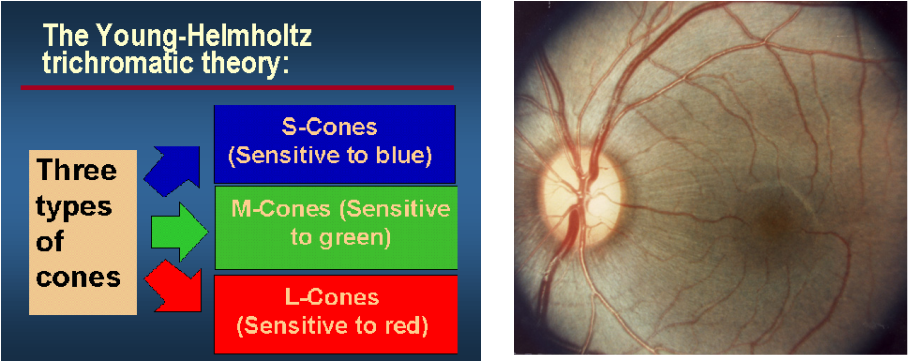Using the phenomenon of 'color mixing', Young made a breakthrough in 1802 which helped him come to postulate that there are three receptors in the eye and each one is especially sensitive to one part of the spectrum. Working with Helmholtz, he speculated that these receptors were thought to convey messages to the brain and depending on how strongly they were stimulated by the colored light, the combined message would be interpreted as the actual color. These would be the RGB, or red, green, and blue receptors. It is known as the Young-Helmholtz trichromatic theory. Young also came up with the idea that the eye can focus images of objects at varying distances. He proposed theories about how the eye and mind might differentiate between various colors.

At left: A basic layout of the Young-Helmholtz trichromatic theory via fac.hsu.edu; At right: A yellow pigment that absorbs blue light via starklab.slu.edu